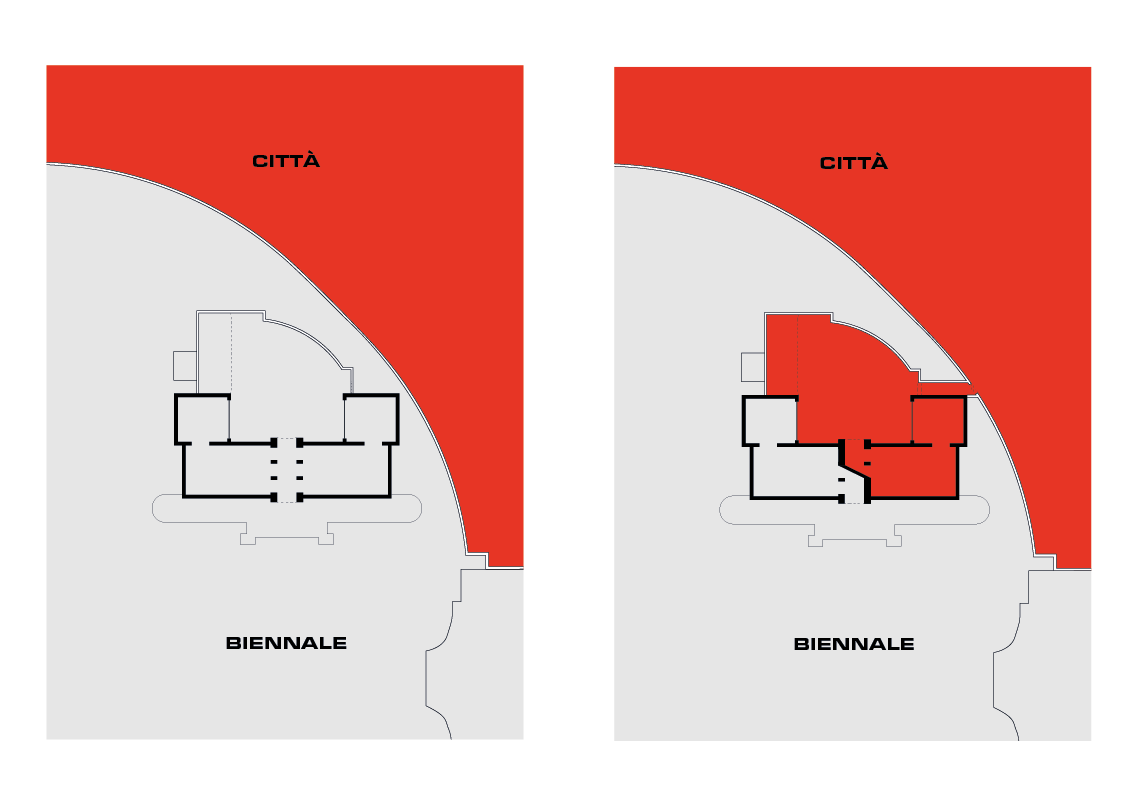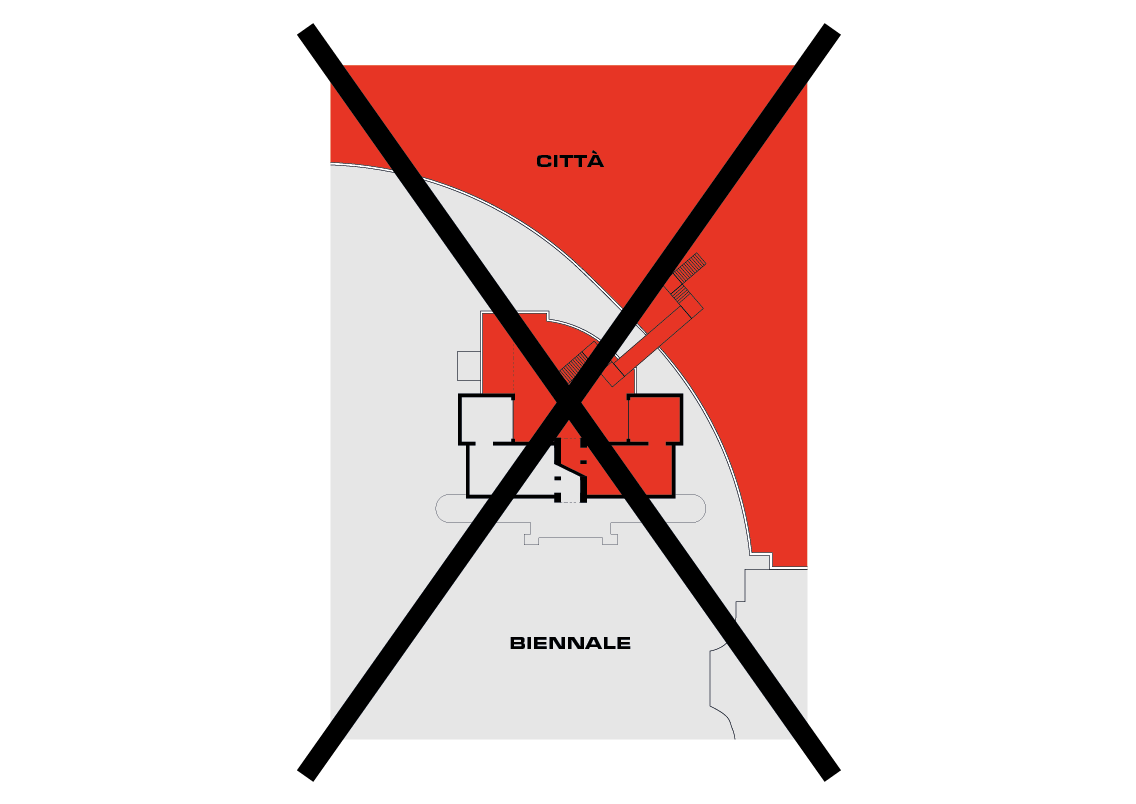‹
PARTECIPAZIONE / BETEILIGUNG
The focus of this intervention is the issue of the power of disposition over space in a city whose land is limited, and thus the issue of social sustainability of the world’s most important architecture exhibition in the context of the old town of Venice.
The Austrian pavilion is situated at the northeastern border wall separating the Biennale premises from the city. This neighbourhood stands as a symbol of the socio-spatial development of Venice in recent decades: the Biennale as an exclave of international art tourism on the one hand and the surrounding sestiere of Castello as a district of Venice that is still mostly inhabited by local residents and, at the same time, a contested area of development, on the other. The Biennale’s constant expansion and current forms of the population’s exclusion from spaces used for its exhibitions are documented and contextualised by local researchers and initiatives.
For “Partecipazione / Beteiligung”, the symmetrical pavilion has been divided. The western half should have remained accessible from the Biennale’s side. The eastern half of the building, including the courtyard, should have been freely accessible from the city via a newly built entrance. It therefore was to be assigned to the population of the adjacent residential neighbourhood and urban initiatives as a place of assembly. Engaging in a close exchange with those, the project has been conceived as the Biennale’s turning to the surrounding city: not in the form of further expansion like over the past decades, but in the form of giving up space and thus as a reversal of the Biennale’s spatial practice.
Yet a possible rejection of the opening towards the city has been taken into account in AKT & Hermann Czech’s original concept. Indeed, despite one year of exploratory talks and negotiations, the Biennale and the competent authorities have not approved the opening of the pavilion. According to the concept, the Austrian Pavilion is therefore now not merely a building to house exhibits, but it also becomes an exhibit in its own right, representing the division and the relationship between the city and the Biennale.
Clelia_Cadamuro.jpg)
AKT _ Hermann Czech.jpg)



 Clelia Cadamuro.jpg)
Clelia Cadamuro.jpg)
Clelia_Cadamuro.jpg)
Clelia_Cadamuro.jpg)